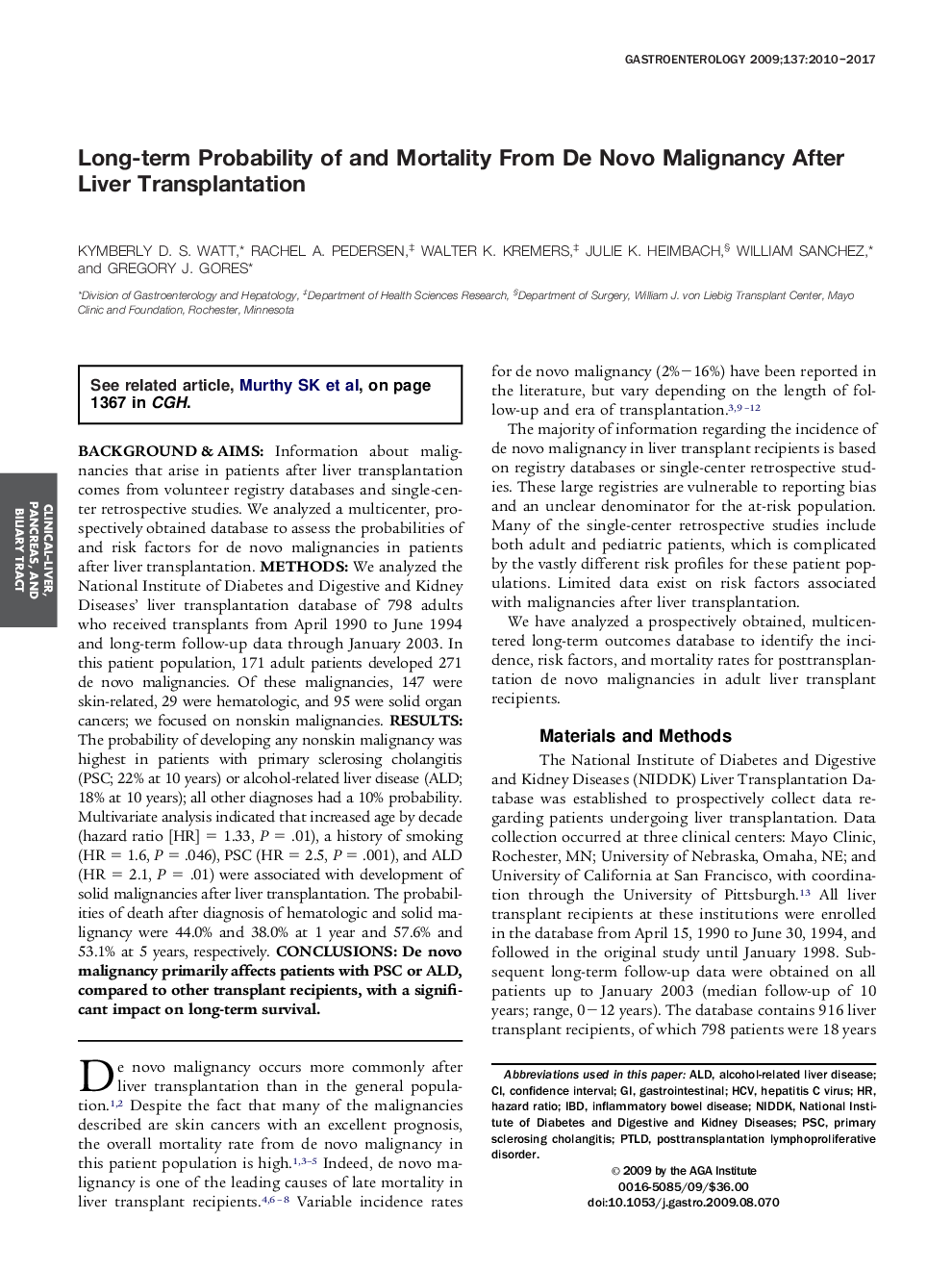| Article ID | Journal | Published Year | Pages | File Type |
|---|---|---|---|---|
| 3297106 | Gastroenterology | 2017 | 8 Pages |
Background & AimsInformation about malignancies that arise in patients after liver transplantation comes from volunteer registry databases and single-center retrospective studies. We analyzed a multicenter, prospectively obtained database to assess the probabilities of and risk factors for de novo malignancies in patients after liver transplantation.MethodsWe analyzed the National Institute of Diabetes and Digestive and Kidney Diseases' liver transplantation database of 798 adults who received transplants from April 1990 to June 1994 and long-term follow-up data through January 2003. In this patient population, 171 adult patients developed 271 de novo malignancies. Of these malignancies, 147 were skin-related, 29 were hematologic, and 95 were solid organ cancers; we focused on nonskin malignancies.ResultsThe probability of developing any nonskin malignancy was highest in patients with primary sclerosing cholangitis (PSC; 22% at 10 years) or alcohol-related liver disease (ALD; 18% at 10 years); all other diagnoses had a 10% probability. Multivariate analysis indicated that increased age by decade (hazard ratio [HR] = 1.33, P = .01), a history of smoking (HR = 1.6, P = .046), PSC (HR = 2.5, P = .001), and ALD (HR = 2.1, P = .01) were associated with development of solid malignancies after liver transplantation. The probabilities of death after diagnosis of hematologic and solid malignancy were 44.0% and 38.0% at 1 year and 57.6% and 53.1% at 5 years, respectively.ConclusionsDe novo malignancy primarily affects patients with PSC or ALD, compared to other transplant recipients, with a significant impact on long-term survival.
